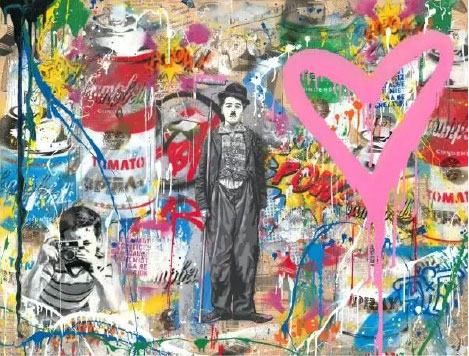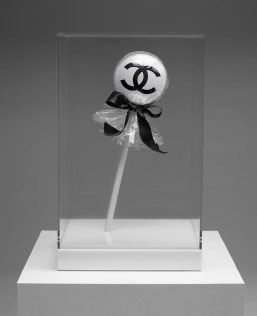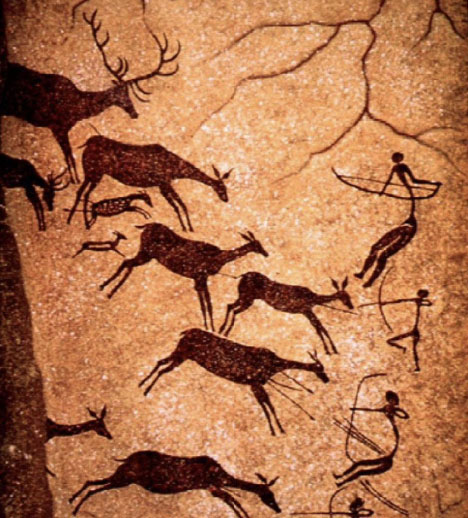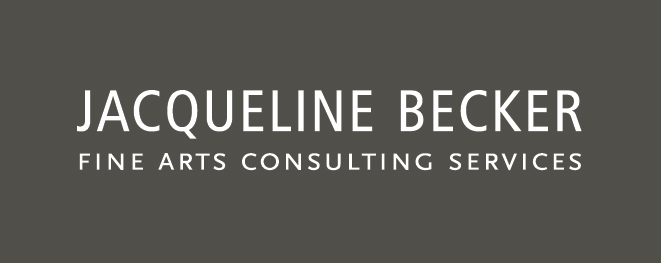Art Trends
As we close in on the first quarter of the 21st Century, it’s intriguing to step back and consider the state of real artistic innovation in the fine arts of our time. If novelty is the birthright of artistic genius, has modernism run its course? Was the explosive pace of artistic growth during 20th C modernism an anomaly? And if so, what are the current trends in art of our time?

Miaz Brothers, Amor Vincit Omnia, (Love Conquers All), acrylic spray paint on canvas. These Italian darlings of the new pop art scene use spray paint, evocating of graffiti, to create a modern pastiche of Botticelli’s Venus.
Abstraction continues to be the most sold style of art in galleries now. Painting techniques that feature voluptuous paint creating dynamic and multi-dimensional effects are enjoying special attention. But one can argue that all abstract art has been done before, that all strokes to the canvas are derivative of some earlier master.
Pop art is undoubtedly one of the biggest trends in 2023. Many newly emerging pop artists are harnessing digital art content to create their work, often using highly derivative photographic images lifted from other sources. They coast on our nostalgia for the bygone—our love of Marilyn Monroe, Botticelli or Charlie Chaplain—delivered in colorful, catchy packages. It’s as if these artists know they have little new to say, so hedge their bets with lovable content styled to replicate the bombardment of social media scrolling. Think Mr. Brainwash, his appropriation of the style of Jean Michel Basquiat, wedded to the street art imagery of Banksy.

Mr. Brainwash, “Goldrush”, silkscreen and mixed media on canvas. Bringing appropriation art to new extremes, Mr. Brainwash adopts Warhol’s soup cans, Keith Haring’s dancing figures, Litchtenstein’s cartoon “POW”, and then seals the nostalgia deal with Charlie Chaplain and a 1950’s boy using a brownie camera.
I’ve seen lots of discussion about the ethics and artistic integrity of “coopted” content in art, a topic that will become even more heated as artificial intelligence is used to create art. It seems fitting that Pop art is the style of our age. It’s unashamed incorporation of popular culture and mass media is perhaps the only style that can hold the attention of an audience that has been born and raised on the non-stop voluminous content and sales pitches of social media. The sculptor Jonathan Paul takes all this commercially driven pandering one step further, proudly adopting the name DESIRE OBTAIN CHERISH as his ‘stage name’ and incorporating chic logos in his paintings intended to produce a shopper’s high upon purchase.

DESIRE OBTAIN CHERISH, “Ones pacifier is another’s panacea”, with its appropriation of the Chanel logo, is designed to produce a “shoppers high” upon purchase, true to the artists adopted name.
Perhaps the most innovative thing about fine art of the 21st century is not the art itself but the fact that it is often inseparable from its mode of transmission. From buying art on line, to pop art that replicates the highly saturated content of doom scrolling Instagram, to art that literally cannot exist without a digital form—art sold as NFT’s, non fungible tokens—is the most relevant art of our age designed to be a replication of the modern digital/commercial experience?
I’m reminded of the famous 1964 aphorism of Canadian philosopher Marshall McLuhan, “the medium is the message”. McLuhan predicted the eventual demise of the printed book. Will hard copy fine art meet a similar fate? I don’t think so. I think the compulsion to express the human condition by literally making one’s mark, an urge as old as the cave paintings, will never die. Even the mash ups of popular artistic iconography and cultural symbols found in the low hanging fruit of art made to please/sell/look good on social media is still a statement of sorts, if not the most original. It’s up to us whether we want to buy it.

The 17,000 year old Cave Paintings of Lascaux France, the oldest known prehistoric drawings, affirm that even prehistoric man was compelled, and found the wherewithal, to record life of their time.
